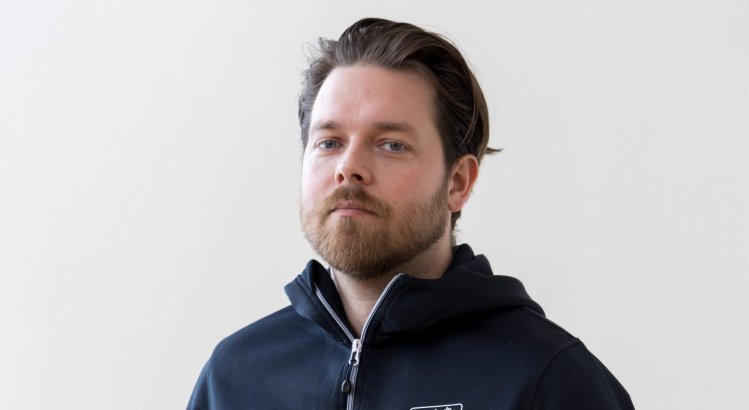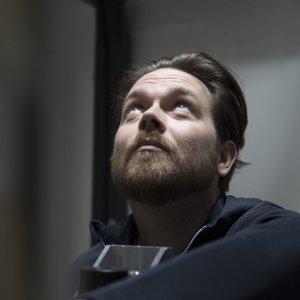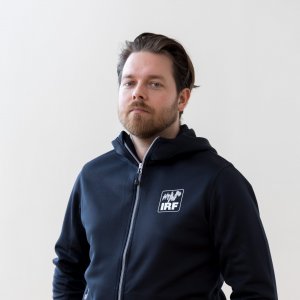
Richard Johansson – appreciates the flexible work
Richard Johansson, 35 years old, has been a PhD student at the head office in Kiruna for five months, working within the Solar terrestrial and atmospheric research programme.
Education and degree:
M.Sc in Space- and Atmospheric Physics from Luleå University of Technology.
What is the focus of your research as an PhD student at IRF?
– In my research, I focus on various trace gases in the atmosphere, and to measure them, we use the Kiruna Microwave Radiometer (KIMRA), a microwave radiometer located here at IRF in Kiruna. Specifically, KIMRA measures the electromagnetic radiation emitted by trace gases when they change states. The measurements made by KIMRA are then used to create altitude-dependent profiles of trace gases such as ozone in the atmosphere. The technique used to create the profiles is implemented in pyARTS, a Python library specifically designed for simulations and retrieval of various trace gases. The procedures used also allow us to retrieve altitude-dependent temperature profiles from measurements of oxygen molecules in the atmosphere.
– With retrieved profiles, we create long time series to, for example, evaluate ozone depletion, both for individual years and to identify long-term trends of ozone changes within the polar circle. Similarly, for the temperature profiles we retrieve, we can analyze temperature trends in the Earth’s atmosphere over time.
Why and how did you become a PhD student at IRF?
– I applied for this doctoral position through the IRF website, where all types of positions at all locations where IRF operates are frequently advertised. The reason I applied for this particular position is entirely related to my research interest. During my time as a university student, my interest grew primarily in atmospheric physics, and particularly in radiation transfer, which is the cornerstone of the physics that describes the emission and absorption of electromagnetic radiation in gases.
What might a typical working day look like?
– A typical workday for me starts by arriving at IRF at 8:00, checking my emails over a morning coffee. After that, I review the measurements conducted overnight. Since I am at the beginning of my doctoral position, there is a lot of programming involved, as all routines for data extraction, evaluation, etc., have needed to be developed from scratch, as the programming language we use for inversions has switched from MATLAB to Python. There may also be some administrative work, such as applying for strategic funding for various conferences and other activities that I, as a doctoral student, am expected to attend, and this takes more time than one might expect.
What opportunities and challenges are there as a doctoral student?
– One of the most amazing opportunities that I see is the unique chance to network with many of the most prominent researchers in your field when visiting and participating in conferences, and other activities worldwide. But also, the work, at least here at IRF, Kiruna, is very flexible. One of IRF’s guiding principles is freedom with responsibility, which I greatly appreciate. The challenges faced by a doctoral student are primarily that the work is very individual. Therefore, students are expected to drive the work forward independently, using both prior and newly acquired knowledge during the doctoral period. However, we obviously do receive help and guidance from supervisors, which is very helpful.
How would you describe IRF as an employer?
– Despite my relatively young age, over the years, I have had many different types of jobs with various employers, and I can readily say that IRF, as an employer, is the best I have ever had. IRF as an organization is very flat, which results in always feeling welcome no matter whose office door you knock on. This way of running an organization is something I truly prefer, as I find that communication improves significantly.
Would you go to space if you had the opportunity?
– My short answer is: No, thank you. I enjoy being on Earth and prefer to look up rather than down.


